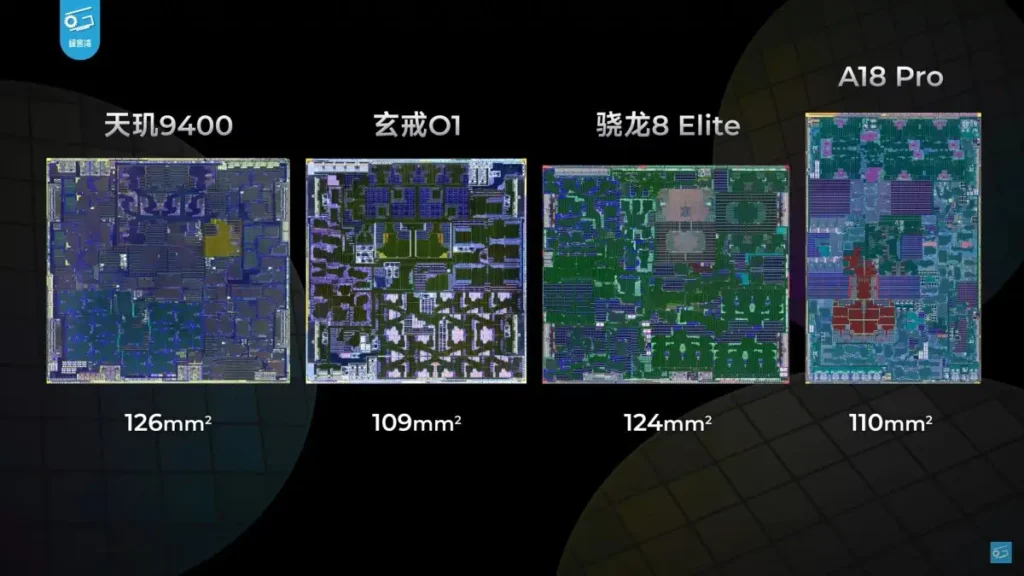Xiaomi has officially entered the flagship chipset arena with the launch of the Xiaomi Xring O1 chipset, and early testing shows it delivers impressive results. Powering the Xiaomi 15S Pro and the Xiaomi Pad 7 Ultra, this custom-designed chip not only performs exceptionally well but also stands as a strong rival to the MediaTek Dimensity 9400 and comes close to the Snapdragon 8 Elite.
Built on Advanced Technology
The Xring O1 is manufactured using the TSMC N3E process node, the same as the Dimensity 9400. However, Xiaomi has taken a bold step by customizing the architecture. Instead of standard configurations, the O1 features two high-performance Cortex-X925 prime cores, diverging from the usual single-core setup. It also uses two variants of Cortex-A720 cores for both performance and efficiency, alongside two Cortex-A520 cores for low-power tasks.

Smart Cluster Design for Power Efficiency
The chipset houses 10 cores in total, cleverly split into performance and efficiency clusters. Four of the A720 cores are designed for high performance, clocking at 3.4GHz, while the remaining two are optimized for efficiency at 1.9GHz. This dual-cluster strategy allows the chip to dynamically manage power and performance, delivering exceptional energy savings in real-world scenarios.
Custom Cache Configuration
Unlike most modern chipsets that use a System Level Cache (SLC), Xiaomi opted out and instead packed the Xring O1 with extensive CPU cache:
- 16MB of shared L3 cache
- 2MB L2 cache per X925 core
- 1MB L2 cache per A720 core
- 4MB GPU cache
- 10MB NPU cache
This configuration helps reduce reliance on external RAM, further boosting efficiency.
Powerful In-House NPU and ISP
A standout feature of the Xring O1 is Xiaomi’s custom-built 6-core NPU. It takes up nearly as much space as the CPU itself, reflecting its importance. The in-house ISP is now integrated into the chip, improving photo and video processing efficiency compared to previous Xiaomi devices that relied on separate ISP chips.
GPU Trade-Offs
While the chipset’s CPU setup is impressive, the 16-core ARM Immortalis-G925 GPU appears to be less power efficient than the one in the Dimensity 9400, which uses a 12-core configuration. Experts speculate that the lack of an SLC might be causing higher power consumption at peak GPU usage.
Real-World Gaming and Modem Impact
Despite the GPU’s higher power draw under heavy load, gaming performance remains efficient thanks to the well-balanced CPU. However, using an external 5G modem (MediaTek T800) results in increased standby power consumption—an area where integrated modem solutions like Apple’s and Qualcomm’s offer clear advantages.
A Step Towards Vertical Integration
Xiaomi is making strides in modem development, having introduced its first in-house 4G modem, the Xring T1, used in the Xiaomi Watch S4. While 5G modem integration remains a future goal, this is a clear move toward deeper vertical integration, mirroring Apple’s strategy with the iPhone 16e.
Final Thoughts
The Xiaomi Xring O1 chipset showcases the company’s ability to build powerful and efficient hardware. With a custom CPU design, impressive cache architecture, and an in-house NPU, Xiaomi is no longer just assembling parts—it’s engineering them. While GPU efficiency and external modem drawbacks need attention, the Xring O1 is a solid first step in Xiaomi’s journey toward chipmaking excellence.
